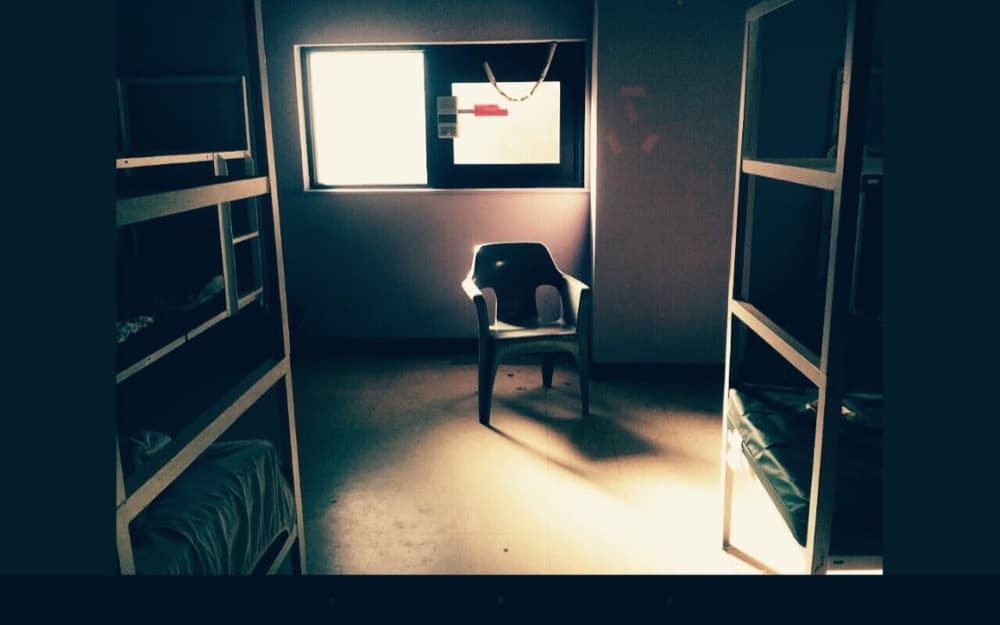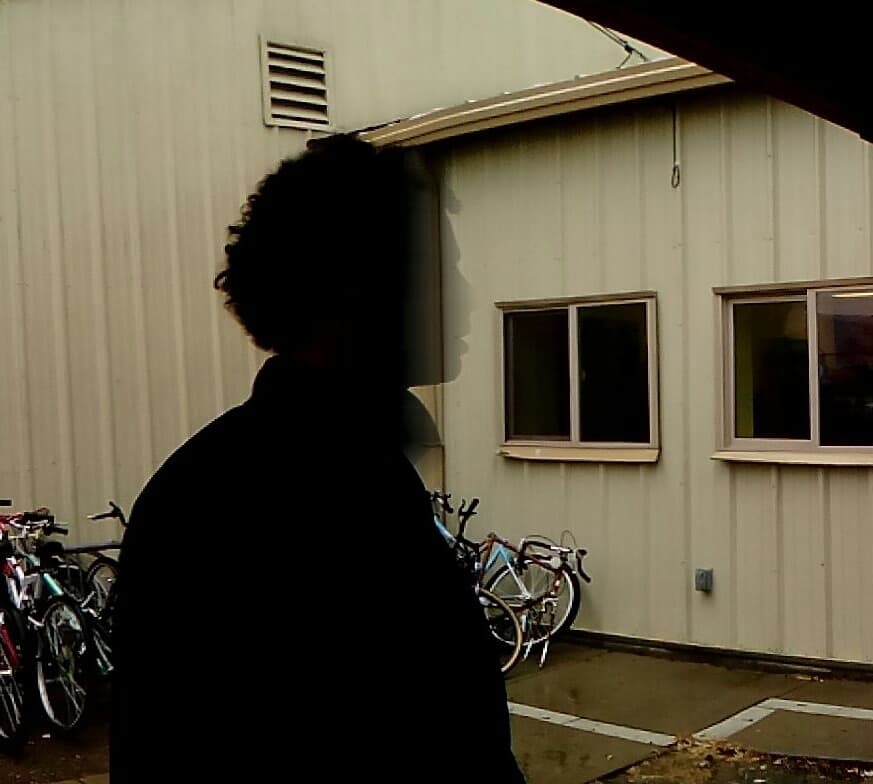Gwen Stacy and Mariah Arellano just moved into their own apartments. That's not too unusual for a couple of 20-somethings, except that they met at a youth homeless shelter in downtown Denver.
They're two of perhaps 2.8 million young people who will spend time homeless in a typical year. Between them, they can tell the most common stories of homeless youth, from Stacy's rejection by a foster family to Arellano's housing crisis.
They have walked through a little understood world, and they documented it in photos, presented below.
Using tablets provided by the University of Denver's Photo Voice project, both young women took photographs of life in the shelter and on the city's streets. Kim Bender, the professor who runs the program, connected Denverite with the photographers.
The images included in this post are among their favorites. Stacy's and Arellano's comments are drawn from interviews we conducted, edited for length.
I gave titles to the photos for clarity, and I've provided statistics and context, though not every fact pertains to their personal stories. If you're interested in the project, Bender's raising money to support future iterations of Photo Voice.
At the window

Stacy: I had been in the shelter for about a month. I didn’t really know what to expect. I had already been living couch to couch, and I was in foster care before that. But being at the shelter, this actually felt like I had degraded myself to the last straw. For me, this photo is loneliness. It’s having to continue my life’s journey alone, after being left alone for so long.
It also represents me trying to make a change. I struggle with suicidal ideations. The light from the window behind -- it’s changing my life to something better. It's like I am the chair.
Context:
- A longitudinal study found kids who have been in foster care are 2.5 times more likely to run away.
- Studies have found that between 10 and 37 percent of homeless youth will attempt suicide at some point in their lives, with women more likely to do so than men.
Ghost life

Arellano: I was taking a panorama photo, showing my friend how to do it. As he was walking, it took this photo. The outline of his face, it really captured the moment -- I don’t really know how to explain it. I liked how it outlined every detail of his face.
To me, it shows sadness. It reminds me of how certain people aren’t accepted. People have to go through life dealing with people judging them, and criticizing everything about them.
Context:
- For homeless youth, "past lives and present circumstances made it difficult for them to be able to trust adults, including health care providers," according to a study in Health Services Research.
- The trauma of the streets, including witnessing violence, can lead young people to "become hypervigilant, impulsive, and have difficulty making appropriate choices when they have the opportunity. They also often cannot determine who to trust and who not to trust," the National Child Traumatic Stress Network reports.
- Children are more likely to run away from parents who distrust them.
Self-portrait

Stacy: I've identified as a woman since I was 3. I came out at 16 to my foster home. They said that they couldn’t be this way because they thought it was the worst possible thing to be. At 18, they found women’s clothing, and they kicked me out. They were not the cool Christians -- they were the conservative asshole Christians.
I think a lot of times that trans people don’t really have that opportunity of having a loving and supporting family. For me, that was it. I’d never really had that. Becoming homeless, it taught me to love myself, it taught me to embrace who I was, because regardless of living out in the streets, I’d embrace who I was.
Context:
- Between 20 and 40 percent of young homeless people may be gay or transgender, according to the Center for American Progress.
- LGBT youth experience higher rates of physical abuse before and during homelessness.
Life outside

Arellano: I spent a lot of time walking around the city. I didn’t have a job. I wasn’t going to school at the time. People ask me, "Do you know how to get here or there?" Of course I know.
Context:
- The average young homeless person ended up on the streets at age 15, a federal study found.
- They spend an average of two years without a home.
Where we stayed

Arellano: When people got kicked out of the shelter (for breaking rules), they'd go and stay there. We’d take our own blanket, and we’d go sleep there. It’s not the warmest place, but it has doors that closed. It’s trespassing if we go in there, so we’re cautious. "Who is that? Are they here to arrest us?" It’s quiet, very quiet -- but we could hear the cars go by.
Context:
- The most common estimates say that between 500,000 and 2.8 million young people will spend time homeless or partially housed each year.
- Several studies have found that homeless youth are most likely to use drop-in services, and significantly less likely to stay at shelters. A study in Los Angeles found that only 28 percent used medical services and 10 percent used mental health services.
The hallway

Stacy: I hated that hallway. You're just squeezing through there. People get into fights in the middle of that hallway.
Now, I'm in one of Urban Peak's housing programs, a year ago in December. I have more space, actually. I live alone. I don’t have anything up -- I don’t have a TV up or anything. The first day was scary as shit.
I literally dragged my bed out into the middle of the living room and slept there, because it’s open. I thought I was going to fuck up on the first day -- which is funny, because I never get in trouble. Now, whenever I look at this photo, I can see my life changing for the better.
Where they are now:
Arellano is completing her high-school degree. She and her boyfriend were lucky enough to find designated affordable housing.
Stacy is currently employed at a thrift store and living at one of Urban Peak's housing complexes.











